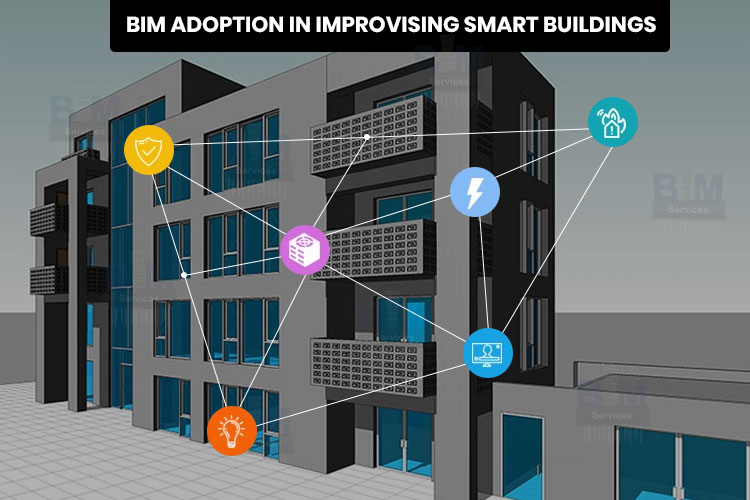BIM adoption in improvising Smart Buildings

BIM Services have already changed the way the buildings are being constructed. This collaborative way of building has unlocked more efficient and cost-effective way of designing, creating and maintaining building assets. With the pervasive implementation of BIM, the technological revolution that was already coming to the construction industry has been fast forwarded.
One of the byproducts of this technological advancement has been: smart buildings. With this article we aim to highlight what are smart buildings and how the Building Information Model can help in their creation and maintenance.
What are Smart Buildings?
A smart building utilizes technology to share and control a building’s operations. It often connects the core system of the building and automates process and functions like heating, ventilation, security etc. This can be done with the help of sensors, actuators and microchips to collect and manage data. There are various benefits of smart buildings like it optimizes operations, improves asset reliability, aid is management and reduces energy. Smart Buildings also focuses on reducing the use of non-renewable energy which leaves a negative environmental footprint.
COVID-19 has only enhanced the importance of smart buildings. They can help the buildings make the optimal use of the available space but it also facilitates unnecessary touching of common spaces. Smart building can have cell-phone controlled lifts, automated doors, censor lights etc. all of which are crucial today.
1. BIM and Smart Buildings:
The design and management of smart building generally focus on two aspects: service and sensing. The service refers to support a smart building should provide to its users in their daily lives. Sensing refers to the autonomous and adaptive functions of the smart buildings. To effectively incorporate these aspects into the building can be complicated and challenging. Here harnessing BIM information can be both advantageous and convenient.
2. BIM Facilitates better coordination and collaboration:
The fundamental feature of a smart building is that its systems are all linked. It begins by first joining the core systems like lighting, power meters, water meters, pumps, heating, fire alarms etc. with sensors and control systems. This is followed by the linking of elevators, access systems and shading at a more advanced stage. At the very core of a smart building thus lies: effective integration and collaboration. When there are multiple disciplines and stakeholders involved a collaboration between all of them can get challenging. BIM makes sure that all the stakeholders stay on the page regarding the project so that troubleshooting and eliminating errors is easier.
3. 3D Visualization:
As stated above sensors play a vital role in smart buildings. They collect data which can be used to make informed decisions about resource allocation. For example: a footfall counter installed in the building may provide information about where people at a certain time of the day. An indoor wireless sensor network (WSN) which provides a detailed description of the building environment is important to gain accurate predictions of signal propagation and establish ink quality between sensor nodes in the building. This design framework provides better visualization in 3D as it facilitates an understanding of the interrelation between sensors and its element i.e. where the sensors will be placed and how they will react to its environment. By combining Architectural BIM Services and virtual reality the application of sensors in relation to its environment can be seen and understood properly.
4. Facility Management:
Third is the maintenance of such smart designs in a building’s post-construction phase. An as-built BIM model can provide complete and accurate details about the buildings which helps the facility managers in maintenance. It is important to properly document the buildings which are more complicated and comprehensive than the traditional building designs. An up to date BIM can also help in locating components, checking maintainability and creating digital assets through its powerful visualization, analysis and control capabilities.
Conclusion:
BIM in construction of smart building works comprehensively better in improving the core system of the building. It also helps in management of new or an existing with automated tools and sensors and improves the productivity of the construction traders and facility managers involved in a project. It ultimately boosts the building functions, reduces rework, time, and cost during the lifecycle of the project.